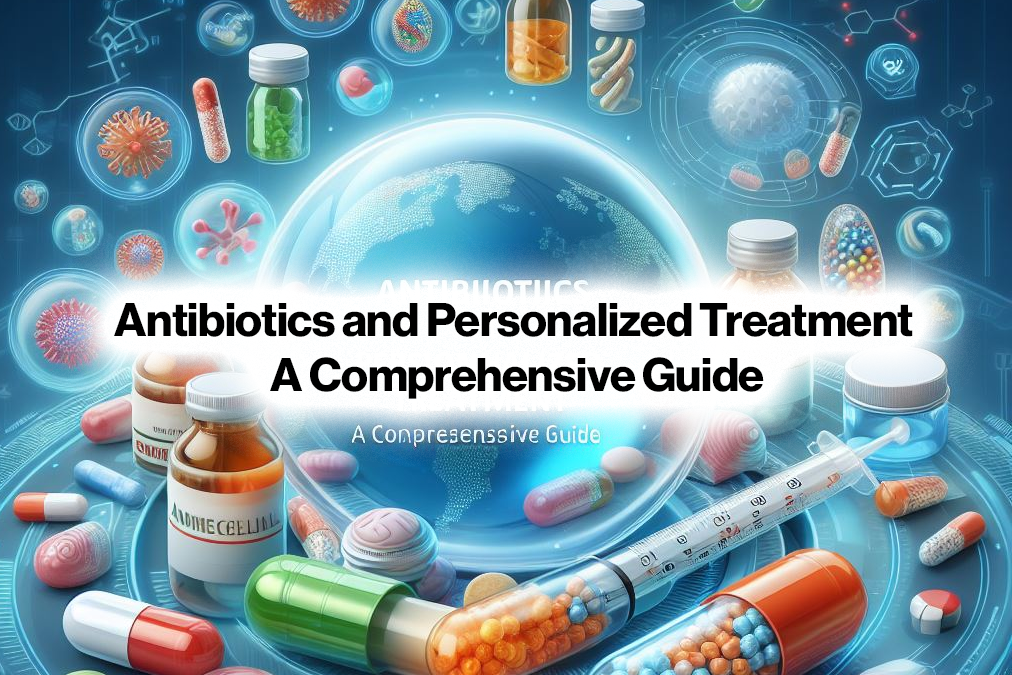In the ever-evolving landscape of healthcare, the intersection of antibiotics and personalized treatment has become a pivotal point of interest for both medical professionals and patients alike. As we delve into this complex subject, we aim to shed light on the significance of tailored antibiotic therapies and their potential to revolutionize patient care. In this comprehensive guide, we explore the nuances of personalized antibiotic treatment, its benefits, challenges, and the promising path it paves toward more effective healthcare interventions.
Understanding Antibiotics: The Backbone of Modern Medicine
Antibiotics are a cornerstone of modern medicine, offering a lifeline against bacterial infections that were once life-threatening. These remarkable compounds have saved countless lives since their discovery, making it imperative to ensure their efficacy and sustained relevance. However, the rising threat of antibiotic resistance has highlighted the need for a more personalized approach to antibiotic treatment.
The Emergence of Personalized Antibiotic Treatment
Traditionally, antibiotics have been prescribed based on standardized guidelines, treating infections without considering the unique characteristics of each patient. Enter personalized antibiotic treatment, an innovative paradigm shift that tailors antibiotic regimens to individual patient profiles. This revolutionary approach takes into account factors such as a patient’s genetics, immune system response, and the specific strain of bacteria causing the infection.
Advantages of Personalized Antibiotic Treatment
1. Enhanced Treatment Efficacy
Personalized antibiotic treatment targets infections with unparalleled precision. By identifying the most effective antibiotics for a particular patient’s infection, healthcare providers maximize the chances of successfully eradicating the pathogen. This not only leads to faster recovery but also reduces the risk of antibiotic resistance.
2. Minimized Side Effects
Customized antibiotic regimens minimize the risk of adverse effects. By tailoring treatment to a patient’s genetic makeup and medical history, healthcare professionals can select antibiotics that are less likely to cause allergies or other unwanted reactions.
3. Combating Antibiotic Resistance
One of the most pressing concerns in modern medicine is the rise of antibiotic resistance. Personalized antibiotic treatment can play a pivotal role in curbing this global crisis. By using antibiotics more judiciously and effectively, we can slow down the development of resistant bacterial strains.
Challenges and Considerations
While the promise of personalized antibiotic treatment is undeniable, there are challenges to overcome:
1. Accessibility to Advanced Diagnostics
Personalized treatment relies on accurate and comprehensive diagnostic tools. Ensuring widespread access to these diagnostics is crucial for the success of tailored antibiotic therapies.
2. Data Privacy and Security
Personalized treatment involves the collection and analysis of sensitive patient data. Protecting this information while harnessing its potential for improved treatment outcomes requires stringent data privacy measures.
3. Integration into Clinical Practice
Incorporating personalized antibiotic treatment into routine clinical practice requires changes in medical education, training, and healthcare infrastructure. Collaborative efforts are needed to bridge this gap effectively.
A Promising Future for Healthcare
As the field of personalized antibiotic treatment continues to evolve, the potential benefits are nothing short of transformative. Imagine a healthcare system where infections are treated with pinpoint accuracy, minimizing collateral damage to the body and reducing the risk of resistance. This vision can become a reality as we invest in research, technological advancements, and interdisciplinary collaboration.
In conclusion, the convergence of antibiotics and personalized treatment marks a significant milestone in modern medicine. By recognizing the individuality of patients and tailoring antibiotic therapies accordingly, we have the power to reshape the healthcare landscape for the better. The road ahead may have its challenges, but the promise of enhanced treatment outcomes, minimized side effects, and combatting antibiotic resistance is a journey well worth undertaking.

Leave a Reply